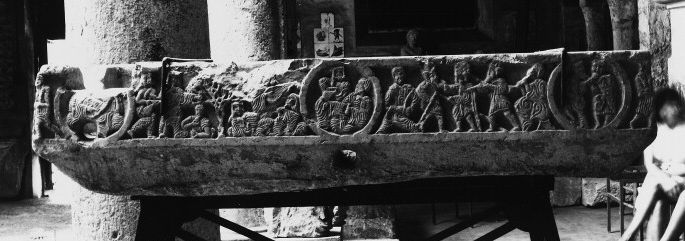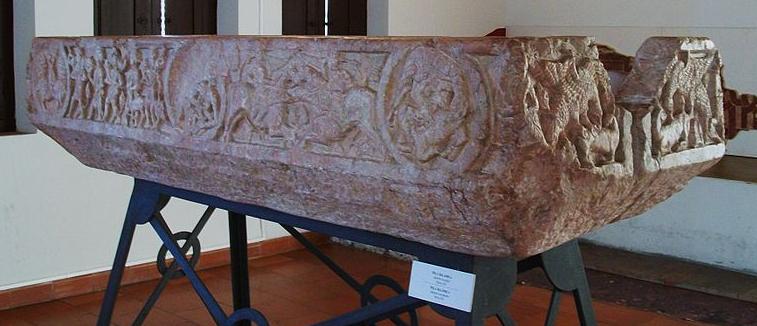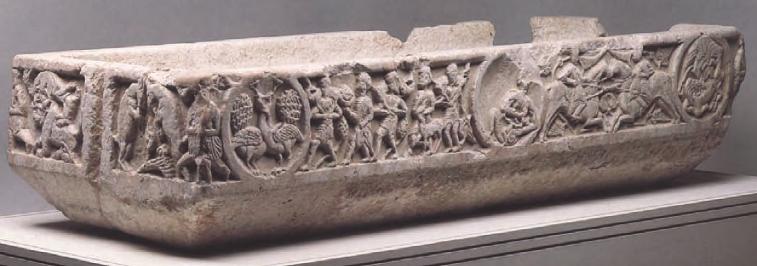The Pilaan Ablution Basin, Xativa, Spain, early to mid 11th century   Larger images of The Pila, an Islamic Ablution Basin, Xativa. Detail of the Musicians, Drinker & Servant and People Carrying a Deer on the Pila Detail of Horsemen on the Pila Detail of Men Pulling Beards on the Pila Detail of Bearers on the Pila |